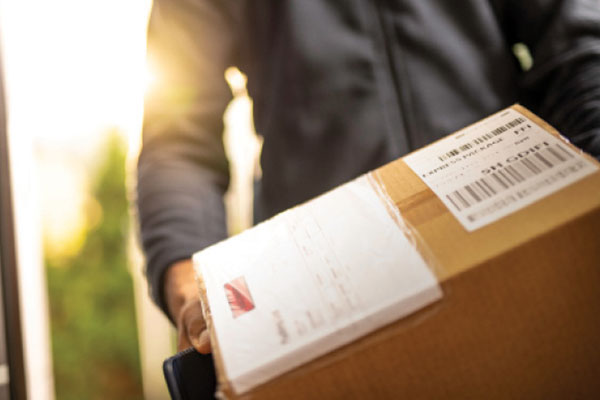Next In E-Commerce: Parcel without the parcels
The convenience of getting products delivered quickly will be greatly enhanced by the ideal of supporting local businesses and workers like Sam.
Merchants have been delivering dairy, produce and household products to customers for several centuries. And over that period of time, it was either a local merchant or the postal service making that last-mile delivery. In the early 20th century, the “parcel” industry was born with a western regional delivery company that was aptly named United Parcel Service.
The invention of delivery vans and international corrugated box standards enabled the rapid adoption of scheduled, multi-day delivery on a national and even international basis, and we saw this mode increase in volume and profits through the early part of the 21st century. Now, the emergence of e-commerce via the Internet changed everything for business and consumers, and parcel has become big business.
With the start of two-day delivery promises, the e-commerce giants pushed the retail industry to adopt fast delivery services—and, of course, the pandemic accelerated this trend. At first this was done using the commercial parcel carriers, but in the last few years another wave has come through. Retailers now want to save on boxes, dunnage and premium service charges while competing on a same-day or next-day service basis.
Strategic changes are rippling through e-commerce. Now, the cake is not quite baked, however, here are four forces currently at work.
First, there’s the “very-local delivery in bags” trend. I recently ordered six health and household products from Walmart.com. They booked the order as delivering within two days, but within 30 minutes they e-mailed that three of the items would be delivered within two hours, fulfilled from my local Walmart.
Soon, a car rolled into my driveway and a gentleman stepped out with a recyclable shopping bag and handed it to me. I asked “Sam” about his work, and he told me that he was a retiree that did deliveries in the afternoon for several local businesses. He can’t take big boxes in his compact vehicle, but bags work really well.
Second, with the renewed push for more sustainable solutions, a greener approach is going to be required. So, we should be seeing more electric vans, self-driving units and drones in addition to part-time entrepreneurs. Minimalist packaging in the form of recyclable bags, pouches and envelopes can be used when a delivery involves a short ride from a local distribution facility, often a retail store. And that savings in boxes, packing materials and longer distance freight goes toward paying for Sam’s services.
Third is an idea that’s popular with urbanites and folks on the move. Drive-in delivery means you place an order and then it’s dropped at a locker or other central location that’s located near where you would go anyway.
Amazon has delivery lockers in the Whole Foods store near my home, and I get a code to open the locker and pick up packages when I visit the grocery store. Keep in mind, too, that getting the product to a safe, convenient space can reduce the theft of packages from porches.
Fourth, technology has emerged that can track orders at the item level, and thus commercial operators can risk entering this “only-a-mile” market. Amazon’s shipping services has been experimenting with serving others besides Amazon to boost the utilization and revenue of its many delivery contractors. Look for more mergers and acquisitions to obtain density and sustainability. Of course, the postal service touches millions of locations every day, so there will be a role for them too.
So, it’s really back to the future. The delivery market is very old, but as we get used to being served seamlessly from near and far there will be no turning back. The convenience of getting products delivered quicky will be greatly enhanced by the ideal of supporting local businesses and workers like Sam.













